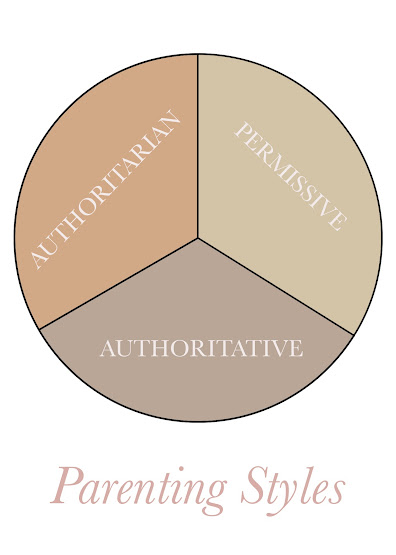Yours, Mine and Ours
On September 9, 1961, in Carmel, California, Frank Beardsley, a widower and father to ten children, married Helen North- also a widow with eight children. Shortly after the wedding, Frank and Helen each adopted one another's children to raise together. Within three years, the couple had two more children of their own. With twenty children, their unique story captured the hearts and attention of the nation, inspiring two books and two motion pictures released in 1968 and 2005 entitled, "Yours, Mine and Ours".
No doubt blending a family with eighteen, then twenty children would face many challenges. The film tells their story well, a retired naval officer with a strict schedule and strong parental voice along with an artistic, nurturing mother with a passive approach to parenting. Emotions run high as the two try to merge their children and parenting styles to create one big, happy family.
While studying the parenting styles pie chart, it made me smile as I immediately remembered the story of the Beardsley family. Frank surely depicts the authoritarian parent. He is strict, rigid, orderly, and has high demands for his children. His approach most certainly is a "my way or the highway" philosophy. As a parent, he calls all the shots and expects strict obedience from his children. His new bride, Helen, on the other hand, is a great example of a permissive parent. She is warm, fun, nurturing, artistic, and free-natured, letting her children run the show. She has little regard for consequences for misbehavior. She is more concerned with allowing her children to be and do whatever they want so as to maintain a friendship with them. She has low levels of correction and expectations for her children and tends to overload herself so that her kids aren't bothered with responsibilities.
As you can imagine, chaos ensued as the couple brought their families together to create one cohesive unit. Initially, both Helen and Frank rejected each other's parenting style and struggled to find common ground leaving the children feeling displaced and frustrated. In time, they found a middle ground in the realm of an authoritative parenting style. This allowed each parent the space to be warm and loving with expectations for their children which created a much more harmonious environment.
Exploring the three different parenting styles helps paint a clearer picture of what works best and why.
On the left side of the pie chart is:
A U T H O R I T A R I A N: seeks complete obedience, exercises almost complete control over children, and has high demands with low levels of responsiveness. Although authoritarian parents love their children, this parenting style can be hard on their children. With little to no negotiation, their high expectations show very little warmth, and mistakes and shortcomings are very, harshly punished. A video produced by BYU-Idaho Online Learning shares, "This style of parenting is likely to create unsociable and withdrawn children who may struggle to understand how to make appropriate choices for themselves."
On the opposite side of the pie chart is:
P E R M I S S I V E: this parenting style is suggestive, passive, and extremely tolerant with very little demand which can be easily manipulated. Most often, a parent with a permissive style is more interested in being their child's friend than a parent. They are warm, have no consequences for their children's misbehavior, and allow their children to call all the shots. Children brought up in this environment will quickly learn how to manipulate their parents, and attempt to with friends, teachers, and peers. In the same BYU-Idaho video, we learn, "This style of parenting is likely to create immature and dependent children with low levels of self-control."
In the middle of the pie chart is the last parenting style:
A U T H O R I T A T I V E: parenting is balanced with authority and warmth. It describes a parent who is learning, changing, and progressing over time to fit their children's needs and circumstances. Most likely, authoritative parents are approachable and willing to guide and negotiate with their children. They have high expectations for their children with high levels of love, warmth, understanding, and forgiveness. "This style of parenting is likely to create children who have good social skills and are ready to become independent upon reaching adulthood. Children of authoritative parents are often self-reliant and confident" best describes the results of authoritative parenting.
In conclusion, the cute rom-com initially released in 1968, gave viewers a clear idea of the three parenting styles and the results it had with the children involved. While the films may be a bit exaggerated in their depictions, it is a fun way to learn more about parenting styles, assess our own perspective and try to set goals that will best fit the needs of our family.
References
Brigham Young University-Idaho (2018). Parenting Styles (Video) BYU-Idaho Online Learning
Hevesi, Dennis (2012). Frank Beardsley, 97, Storied Father of 20 (Section B, p. 19) The New York Times
https://www.nytimes.com/2012/12/21/us/frank-beardsley-yours-mine-and-ours-real-life-father-dies-at-97.html
Shavelson, Melville (1968). Yours, Mine and Ours (Film) Walden Productions



Comments
Post a Comment